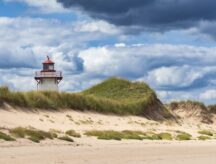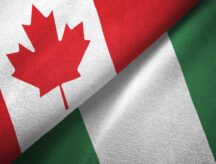Canadians return Liberals to power with minority government
Pour lire cet article en français, cliquez ici.
Canadian voters elected a minority Liberal government Monday night, bringing an end to a 40-day election campaign that heard many promises on immigration but never saw it emerge as a top issue.
The Liberals won 157 of Canada's 338 electoral districts but earned just 33.1 per cent of the popular vote, down from 39.5 in 2015.
The Liberal minority led by Justin Trudeau will face an opposition led by the Conservative Party of Canada, which won 121 seats and received 34.4 per cent of the popular vote.
A resurgent Bloc Québécois took 32 seats, followed by the New Democratic Party with 24, the Green Party with three and one independent candidate.
The new People’s Party of Canada, which campaigned on a pledge to reduce the number of immigrants admitted each year to Canada, did not win a seat.
Liberal immigration priorities
The Liberals' minority status means they will now have to find common ground among their opponents in Parliament in order to pass legislation.
However, given that all five parties represented in the House of Commons campaigned on essentially pro-immigration policies, obtaining majority support for immigration policies may be possible.
One priority issue is Canada’s annual immigration levels, which the Liberals have pledged to raise through “modest and responsible increases.”
The multi-year approach to immigration levels planning that was introduced by the Liberals in 2017 has the number of newcomers to Canada reaching 350,000 by 2021 — a total annual increase of around three per cent over 2020.
This level of increase could continue beyond 2021 if the Liberals can gain majority support for their immigration targets moving forward.
Nearly 60 per cent of newcomers will be admitted through Canada’s Economic Class immigration programs and the Liberals’ election platform said they will maintain this focus on “highly skilled people who can help build a stronger Canada.”
Conservative leader Andrew Scheer referred to the Liberals’ immigration targets as “reasonable” during the election campaign. He also said Canada’s immigration targets should not be “politicized,” which suggests some cooperation between the two parties on Canada’s targets may be possible.
Express Entry
The Liberals aren’t expected to introduce major changes to Canada’s Express Entry system, which was introduced by the Conservatives in 2015 to manage the pool of candidates for three of Canada’s main economic immigration programs - the Federal Skilled Worker Class, Canadian Experience Class and Federal Skilled Trades Class.
The points-based system issues eligible candidates a score based on their age, education level, skilled work experience and proficiency in English or French, among other factors, and a set number of the highest-ranked candidates are invited to apply for Canadian permanent residence through regular draws from the Express Entry pool.
In 2016, the Liberals reduced the number of points awarded for a job offer from 600 to a maximum of 200 to ensure that those invited to apply for permanent residence are highly skilled and more likely to find economic success in Canada.
The Conservatives pledged to reverse this change in their election platform, a promise that could spark some friction between the two top parties in Parliament.
Find out if you are eligible for the Express Entry pool
Regional immigration
Another key Liberal pledge on immigration was their promise to create a Municipal Nominee Program in order to ensure communities of all sizes around Canada are able to attract and support skilled foreign workers and their families.
The Liberals said the proposed program “will allow local communities, chambers of commerce, and local labour councils to directly sponsor permanent immigrants.”
The Liberals also pledged to make the Atlantic Immigration Pilot permanent. The fast-track program allows employers in Canada's four Atlantic provinces — Nova Scotia, New Brunswick, Newfoundland and Labrador and Prince Edward Island — to hire foreign nationals for jobs they haven’t been able to fill locally.
Both the Municipal Nominee Program and Atlantic Immigration Pilot echo the Conservative pledge to “encourage new economic immigrants to consider jobs in remote parts of the country by providing them with information about opportunities that exist outside of our urban centres.”
The Liberals also pledged to make applying for Canadian citizenship free, saying the “process of granting citizenship is a government service, not something that should be paid for with a user fee.”
Possibility of NDP or Bloc Québécois support?
The Liberals could also find common ground with the NDP or Bloc Québécois on certain immigration-related initiatives.
Relying on either party for legislative support, however, would come with strings attached and open the door to the Liberals considering NDP or Bloc immigration priorities.
For the NDP, these priorities include improving the recognition of foreign professional credentials, removing the annual cap on sponsorship applications for parents and grandparents and suspending Canada’s Safe Third Country Agreement with the United States.
The Safe Third Country Agreement limits who can claim asylum at official land border crossings between Canada and the United States, but doesn’t extend to unofficial points of entry.
This loophole has been used by nearly 50,000 mainly non-Americans to claim asylum in Canada since U.S. President Donald Trump came to power.
The NDP says the treaty should be suspended to allow all asylum seekers to make their claim at official border crossings.
The Bloc Québécois could try to leverage its renewed presence in Parliament to secure greater autonomy for Quebec over immigration to the province.
Quebec already has the power to select all Economic Class immigrants to the province and set immigration levels, and its provincial government is now seeking control over Family and Refugee class admissions to the province.
Immigration priorities outlined by the Bloc Québécois include ensuring that Quebec residents who apply for Canadian citizenship have sufficient knowledge of French, a veto for Quebec over any federal decision to expel a refugee and suspending Canada’s Safe Third Country Agreement with the United States.
The vast majority of asylum seekers from the U.S. have entered into Quebec via an unofficial crossing called Roxham Road and the Bloc Québécois wants the treaty suspended to limit the backlog of claims and the cost to Quebec.
Find out if you are eligible for any Canadian immigration programs
© 2019 CIC News All Rights Reserved
- Do you need Canadian immigration assistance? Contact the Contact Cohen Immigration Law firm by completing our form
- Send us your feedback or your non-legal assistance questions by emailing us at media@canadavisa.com







